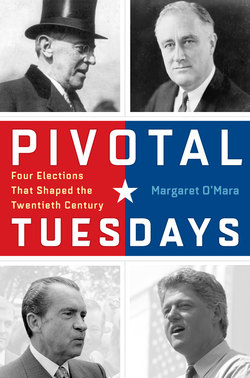Читать книгу Pivotal Tuesdays - Margaret O'Mara - Страница 13
На сайте Литреса книга снята с продажи.
ОглавлениеCHAPTER 3
The Road to the New Deal
If 1912 was a good year to be a Democrat, 1928 most certainly was not. It was, wrote Democratic operative James A. Farley, “a disaster as overwhelming as anything that ever happened in [the Party’s] century of existence.” Although the decade began with the scandal-marred Republican presidency of Warren Harding, the era of his successor Calvin Coolidge had been one of buoyant prosperity and economic optimism, of rising incomes and rising consumption. Coolidge’s secretary of commerce Herbert Hoover embraced this sunny outlook when he became Republican presidential nominee in 1928, proclaiming that “we in America today are nearer to the final triumph over poverty than ever before in the history of any land.” The majority of American voters appeared to agree, giving Hoover a landslide victory. Despondent Democrats, wrote Farley, felt that “breaking the power of the Republican Party seemed impossible.” Perhaps the Democratic Party itself had “outlived its usefulness.”1
Even when the stock market crashed in late October 1929—a “Black Tuesday” that came after nearly two months of roller-coaster volatility—many observers regarded it as a blip on the broader economic picture. With only 2 percent of Americans holding any investments in the market, the crash seemed like a crisis for Wall Street, not for Main Street. If history served as a guide, the market would right itself eventually just as it had in other crises and panics, which had occurred with some regularity since the beginning of the industrial age. Stock market crashes were an inevitable side effect of industrial capitalism, so the reasoning went, and the market corrected itself over time.2
